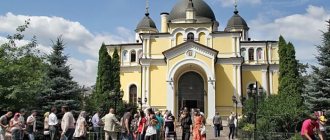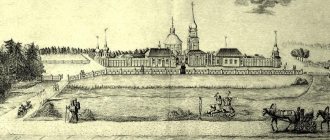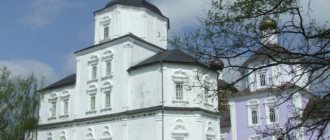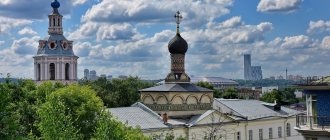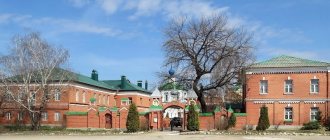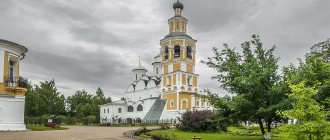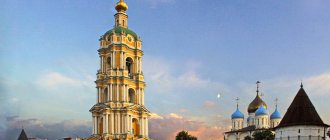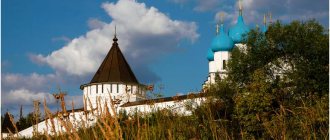Crimea is an amazing peninsula with a unique climate and nature of extraordinary beauty. Its picturesque corners are unusual and unique.
In addition to the natural resources that Crimea is so generously endowed with, it is also famous for the huge number of churches and monasteries on its territory. The monasteries of Crimea have a rich history of development. They attract you. like a magnet, they attract with their unknown secrets and amaze with their indescribable beauty.
Monasteries of Crimea
Everyone knows the St. George Monastery, located on Cape Fiolent. It was founded in 891. A very interesting legend is associated with him. According to it, Greek sailors were shipwrecked at the cape. Desperate sailors began to ask St. George for help. He heeded their prayers, and the storm was pacified. The sailors who survived the fight against the elements founded the St. George Monastery in gratitude to the saint who saved them.
The convents of Crimea are also famous for their picturesqueness. The Toplovsky Monastery, which is located near Simferopol, has three churches on its territory. Two of them are active. The holy springs of the convent attract a large number of people every year, many of whom find healing from their ailments here.
Particularly interesting are the cave monasteries in Crimea. Each of them has its own unique history and attracts tourists with its mystery.
Three-Eyes or Vorontsov Cave
Mountain Crimea hides a large number of caves. But not everything can be visited by non-specialists. The most accessible is Three-Eyes.
Three-Eyes Cave inside
There are more than 3 million years old, depth -30 meters. Occupies more than 600 sq. meters. You can get inside it through 3 shafts - gaps that resemble three eyes along a ladder. Through one of them, located almost vertically, sunlight penetrates into the cave; During the cold season, it snows. It's always cold inside. The snow does not melt completely; even in summer there is ice on the floor. Ancient hunters stored the meat of killed animals here. When they filmed the film "The Prisoner of the Chateau d'If", they drew eyes.
Important! Before going on an excursion, you need to take warm clothes with you; the air temperature inside does not rise to 10 degrees. In winter, Three-Eyes is closed.
Cave monasteries of Crimea
Shuldan Monastery is located in the cliffs of the rock of the same name, which hangs over the Shul Valley.
Translated, Shuldan means “giving off an echo.” The monastery consists of two churches. In addition, on its territory there are up to twenty accompanying premises located on several tiers. The most significant monuments of the monastery include two cave churches. It is noteworthy that after the capture of the peninsula by the Turks, most likely, the complex hardly functioned. Residents of a nearby village used its premises to keep livestock.
The Chelter Marmara Monastery was founded at the end of the 8th - beginning of the 9th century. It is located in the cliffs of Mount Chelter-Kaya near the village of Ternovka. The caves here are located in four tiers. Their total number is more than fifty. There are also four churches. A rocky path leads to the foot of the monastery, passing through thickets of juniper, cotoneaster and dwarf tree.
Red Cave Kizil-Koba
The largest is 20 km long. Red because iron impurities predominate in the rock. Only half a kilometer is accessible to ordinary tourists. It will be convenient to get there on a fairy-tale train, especially when it rains.
There is the possibility of an extreme excursion: put on scuba gear and see the flooded passages and halls with your own eyes. The underground passages are located on six levels, with a drop of more than 250 meters.
Inside the cave there are numerous lakes, wells, waterfalls, huge halls, as well as the largest stalactite in Europe, 8 thousand years old. Full information about the Red Cave (Kizil Koba) in Crimea can be found here.
Assumption Monastery in Crimea
No self-respecting tourist will neglect the opportunity to visit the most sacred place in the city of Bakhchisarai - the Assumption Monastery.
Crimea is rich in extraordinary places, but this monastery stands out from many others. It has a rich history. Over the twelve centuries of its existence, the monastery experienced many periods of both prosperity and decline. In the middle of the 15th century, the holy monastery served as the main support for Christianity on the Crimean peninsula.
The monastery is located in one of the most deserted areas of Crimea - the Mariam-Dere tract. It is surrounded on both sides by high cliffs. The panorama of the Crimean Mountains opening from the temple amazes even the most experienced travelers. Many great people visited the territory of the monastery - Emperors Alexander I and II, the last Emperor of Russia and others.
Yalta cave on the Ai-Petri plateau
The smallest but incredibly beautiful cave. Traces of human activity from the Neolithic era were discovered here.
During the warm season, tourists can contemplate numerous long stalactites that hang from the arches, like pasta. On the floor of the large hall there are many stalagmites of incredibly crazy shapes. The walls are in sagging. Light from small electric bulbs creates an unimaginable play of light and shadow.
It is famous for its vertical well, 40 meters long, through which you can go down to the lower hall. Not every tourist can do this: only daredevils, in the company of a climbing guide, wearing special equipment, will go down.
St. Klimentyevsky Monastery
The monasteries of Crimea attract a large number of tourists every year. Among them there is the St. Klimentyevsky Monastery, which is the most ancient on the territory of the Crimean Peninsula. In its place, the first Christians of Crimea found their refuge. In the same area is the Church of St. Clement, which is carved into the rock.
From the holy monastery you can go to the ruins of the old Byzantine fortress of Kalamita.
The monasteries of Crimea are the greatest wealth of the peninsula. An Orthodox person will find here everything he needs to connect with nature and the Creator. Picturesque places will fill the soul of any person, whether he is a believer or not, with bliss and harmony. And the many legends with which the history of each monastery is connected will not leave anyone indifferent. The Orthodox shrines of the Crimean Peninsula are unique historical and cultural monuments necessary for the spiritual life of society.
Marble Cave
The most visited cave in Crimea is located on the Chadyr-Dag plateau, not far from the village of the same name. It was formed in marble-like limestones, which is why it got its name. Located at a depth of 60 meters, the length is just over 2 km.
It was opened to tourists relatively recently, and is not fully equipped. In the gallery of fairy tales, guests are greeted by bizarre stalactites and stalagmites, led by the “Master”, in the form of a head. Then the so-called Minaret. In the following halls there are no less fascinating objects made of rock: a bear's well, an octopus, a castle and even a Tsar Bell. The journey ends at the dam, where the lower gallery is visible. Those who wish can go down by ordering a “Speleotour”. We tell you more about the Marble Cave in a separate review.
Marble cave in Crimea
Favorite places of the royal family
Photo by Kirill Novotarsky
The estate in Livadia - the Livadia Palace, a large picturesque park - was the summer residence of three families of Russian tsars for more than 50 years: Alexander II came here almost every summer, Alexander III ended his life here, and Nicholas II took the oath of allegiance to the Russian throne here.
The taking of the oath took place in the Church of the Exaltation of the Cross, which was built next to the estate under Alexander II and still exists. In this temple, the holy righteous John of Kronstadt performed funeral services for the late Emperor Alexander III, and the future Empress Alexandra Feodorovna accepted the Orthodox faith. Therefore, nine saints are considered the heavenly patrons of this temple: Saint Righteous John, royal martyrs Nicholas II, Alexandra Feodorovna, Grand Duchesses Olga, Tatiana, Maria, Anastasia, Tsarevich Alexei and the Reverend Martyr Grand Duchess Elizabeth Feodorovna.
Under Nicholas II, a new one, larger in size, was erected on the site of the old palace. The royal family often spent time here. In the spring, as in Yalta, the famous “White Flower Festival” took place on the Livadia estate.
The royal family in Livadia. 1911
Nicholas II loved to walk along the path that led from the palace along the sea, and ordered to make the path longer - this is how the Tsar’s Path appeared, a favorite place for walking and horseback riding of the entire imperial family. In Soviet times, the trail was renamed “sunny”, but this place is known for its shade and coolness.
During walks along the Tsar's Path, amazing seascapes open up, and in the vicinity of the path there is the Church of the Intercession of the Blessed Virgin Mary, erected with the assistance of Grand Duke Konstantin Nikolaevich, and the Church of the Archangel Michael, built in 2006 on the site of an ancient monastery.
The further fate of the monastery
After the dissolution of the monks, local authorities began to establish a nunnery on this territory. Young criminals were sent there for re-education with nuns.
At the beginning of the 20th century, despite poverty, the community began to flourish again. The first abbess was nun Barsanuphia, who came from the Trinity-Paraskevievsky Monastery with 25 sisters. Even Tsar Nicholas came to the service with his family, with his sick son, who was brought to the waters of the spring. In 1911, a protected area for royal hunting appeared around the monastery.
In those days, the walls of the monastery contained two shrines:
- the icon of the Mother of God of Jerusalem - it was brought from Athos with a monk who lived there and was moved to the Crimean monastery; the image was painted specifically for the monastery;
- icon of Saints Cosmas and Damian with particles of relics.
The cruel times of Soviet power did not spare the women's monastery, hidden in the forest. The community was closed, the nuns were kicked out into the street, and the Great Patriotic War caused enormous damage to the territory. The Nazis razed all the buildings that were in the monastery; only the chapel near the source survived.
Restoration of the monastery began in the 1990s. It was very difficult to restore the monastery, since the lands had long been given to the Crimean Nature Reserve, and local businessmen did not want to share their profits with the monks. As a result, the monastery was built in the village of Partenit.
The place of the sermon of St. Andrew the First-Called and the baptism of Prince Vladimir
Photo Alex Malev/Flickr/CC BY-SA 2.0
On the outskirts of Sevastopol are the ruins of the ancient Greek city-state of Chersonesos. Today it is one of the most significant ancient monuments in the world and ranks with the Egyptian pyramids, the Roman Colosseum and other wonders of the world.
Chersonesos was founded in the 5th century BC. The first followers of Christianity appeared here already in the 1st century. According to legend, the path of the Apostle Andrew the First-Called to Scythia, to the place of his ministry, passed through Chersonesos. At the beginning of the 4th century, seven missionary bishops were sent here to establish Christianity: five of them were brutally killed by local pagans. In memory of the seven Chersonese martyrs, a temple was erected here.
By the end of the century, Chersonesos became the Christian center of Crimea, and soon became part of the Byzantine Empire. And it was here in 988, according to the Tale of Bygone Years, in the temple “in the middle of the city, where the Korsun people gather for bargaining,” that one of the key events in history took place - Prince Vladimir received Holy Baptism. Now the Vladimir Cathedral stands at the supposed site of his baptism.
Over the course of two thousand years of its existence, Chersonese had to wage continuous wars, and already in the 16th century, only ruins remained on the site of the once rich and glorious Greek city.
Today Chersonesos is a national museum-reserve and the largest site of archaeological work on the Black Sea coast. Here you can see the ruins of an ancient theater, many temples, towers and walls, as well as all kinds of objects used by the inhabitants of Chersonesos. By the way, the most valuable of them are in the Hermitage (St. Petersburg) and in the State Historical Museum and the State Museum of Fine Arts. A. S. Pushkina (Moscow).
